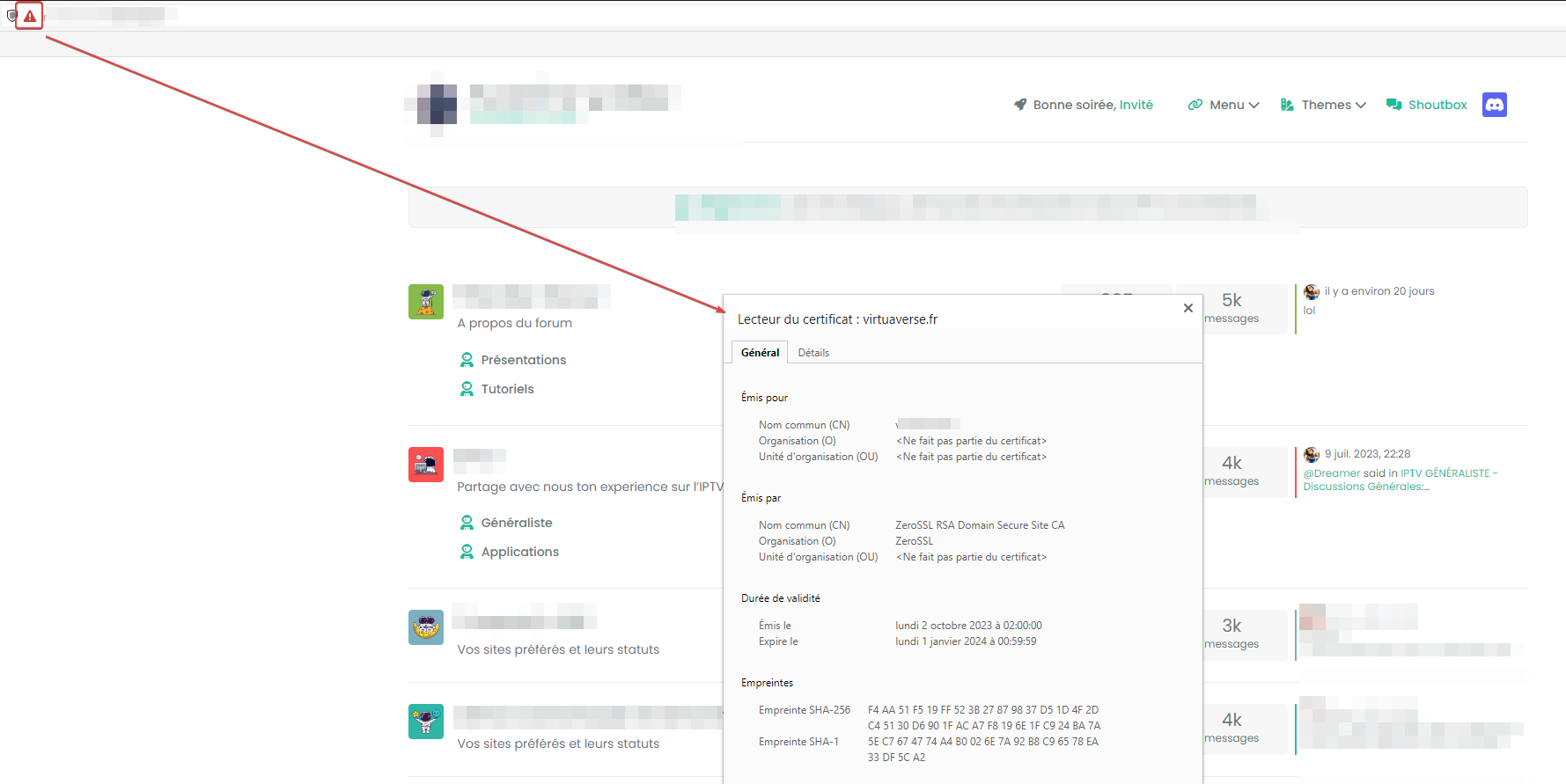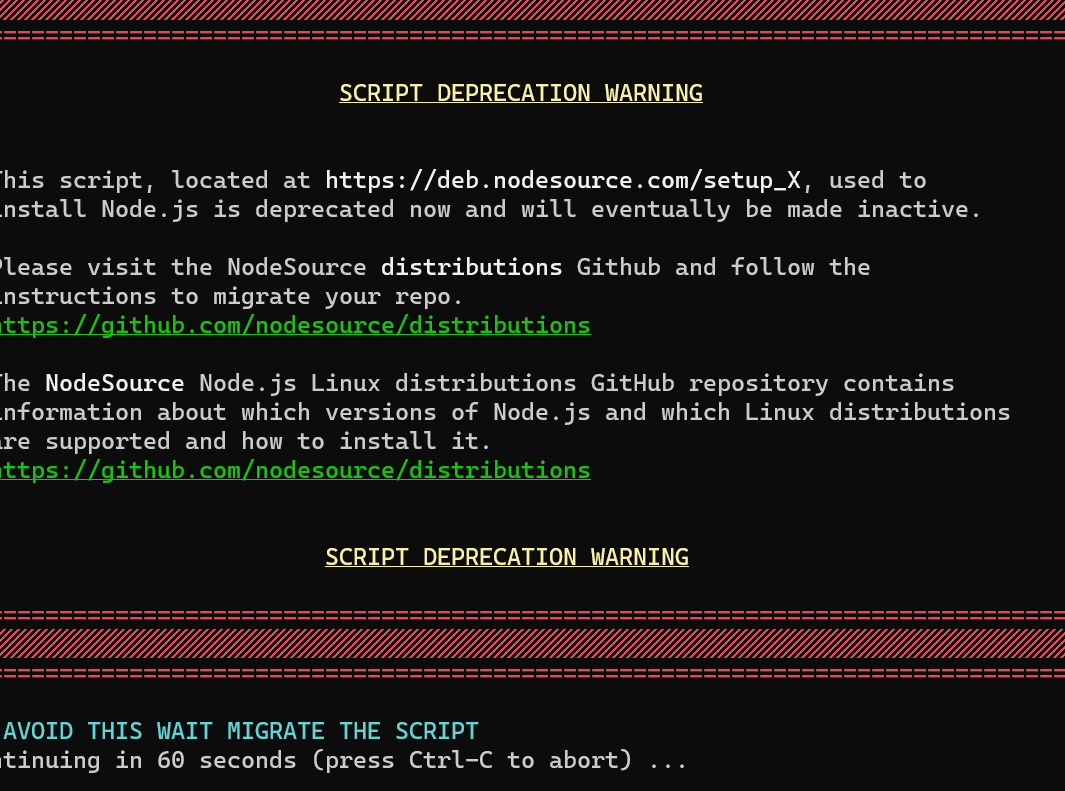Issues getting Flarum to work on new host
-
@Hari You should only apply the certificate at Virtualmin level, so here for example. You’ll need to update your DNS first before you can get a certificate.

@phenomlab sorry, i have no clue where to update DNS
i have pointed ask.domain.com to my DO IP at CF
anything else that needs to be done?
-
@phenomlab sorry, i have no clue where to update DNS
i have pointed ask.domain.com to my DO IP at CF
anything else that needs to be done?
@Hari said in Issues getting Flarum to work on new host:
sorry, i have no clue where to update DNS
i have pointed ask.domain.com to my DO IP at CFThat’s all you need to do. Let me see if I can get the cert to work
-
@Hari said in Issues getting Flarum to work on new host:
sorry, i have no clue where to update DNS
i have pointed ask.domain.com to my DO IP at CFThat’s all you need to do. Let me see if I can get the cert to work
@phenomlab thanks, daily upvote limit reched
-
@phenomlab thanks, daily upvote limit reched
@Hari said in Issues getting Flarum to work on new host:
thanks, daily upvote limit reched
Yeah, I need to fix that !!
-
@Hari said in Issues getting Flarum to work on new host:
thanks, daily upvote limit reched
Yeah, I need to fix that !!
@phenomlab do i need to update the subdomain at Nginx config files? i have seen IP there
-
@phenomlab do i need to update the subdomain at Nginx config files? i have seen IP there
@Hari No. Leave that as is
-
@phenomlab thanks, daily upvote limit reched
@Hari said in Issues getting Flarum to work on new host:
daily upvote limit reched
Should be resolved now. Try upvoting again (same for @crazycells)
-
@phenomlab ok, i have checked gt matrix looks like response time is very slow how can i increase it?
-
@Hari said in Issues getting Flarum to work on new host:
daily upvote limit reched
Should be resolved now. Try upvoting again (same for @crazycells)
@phenomlab i am seeing upvote limit is 10 still could not upvote
-
@phenomlab ok, i have checked gt matrix looks like response time is very slow how can i increase it?
@Hari As you are running this domain through CF, you should enable the caching and protection there. At the moment, you are pointing to the server directly.
-
@phenomlab i am seeing upvote limit is 10 still could not upvote
@Hari Let me check
-
@phenomlab i am seeing upvote limit is 10 still could not upvote
@Hari said in Issues getting Flarum to work on new host:
i am seeing upvote limit is 10 still could not upvote
Try now
-
@Hari said in Issues getting Flarum to work on new host:
i am seeing upvote limit is 10 still could not upvote
Try now
@phenomlab still same
-
@phenomlab still same
@Hari Seems the max value is hard coded, so you’ll have to wait until tomorrow

-
@phenomlab sure, i have enabled CF cache but the response time is still slow should i enable redis cache ?
-
undefined Hari has marked this topic as solved on 16 Feb 2022, 15:23
-
@phenomlab sure, i have enabled CF cache but the response time is still slow should i enable redis cache ?
@Hari Redis cache isn’t the “saviour” everyone thinks it is - most of files and assets required to access the site initially will be served from the CF edge networks, although CF won’t have any impact on the database.
Something like Flarum’s
ReCacheis suggested here - I know that the developer of this product has since left the Flarum team, so I’m not sure if this is still an active product. -
@Hari Redis cache isn’t the “saviour” everyone thinks it is - most of files and assets required to access the site initially will be served from the CF edge networks, although CF won’t have any impact on the database.
Something like Flarum’s
ReCacheis suggested here - I know that the developer of this product has since left the Flarum team, so I’m not sure if this is still an active product. -
@Hari Redis cache isn’t the “saviour” everyone thinks it is - most of files and assets required to access the site initially will be served from the CF edge networks, although CF won’t have any impact on the database.
Something like Flarum’s
ReCacheis suggested here - I know that the developer of this product has since left the Flarum team, so I’m not sure if this is still an active product. -
@Hari its working without adding this lines
-
@Hari You need to add this to the Flarum
.nginx.conffile, like the belowlocation / { try_files $uri $uri/ /index.php?$query_string; } location = /sitemap.xml { try_files $uri $uri/ /index.php?$query_string; } So just outside of the default
location /block
Did this solution help you?
Hello! It looks like you're interested in this conversation, but you don't have an account yet.
Getting fed up of having to scroll through the same posts each visit? When you register for an account, you'll always come back to exactly where you were before, and choose to be notified of new replies (ether email, or push notification). You'll also be able to save bookmarks, use reactions, and upvote to show your appreciation to other community members.
With your input, this post could be even better 💗
RegisterLog in





